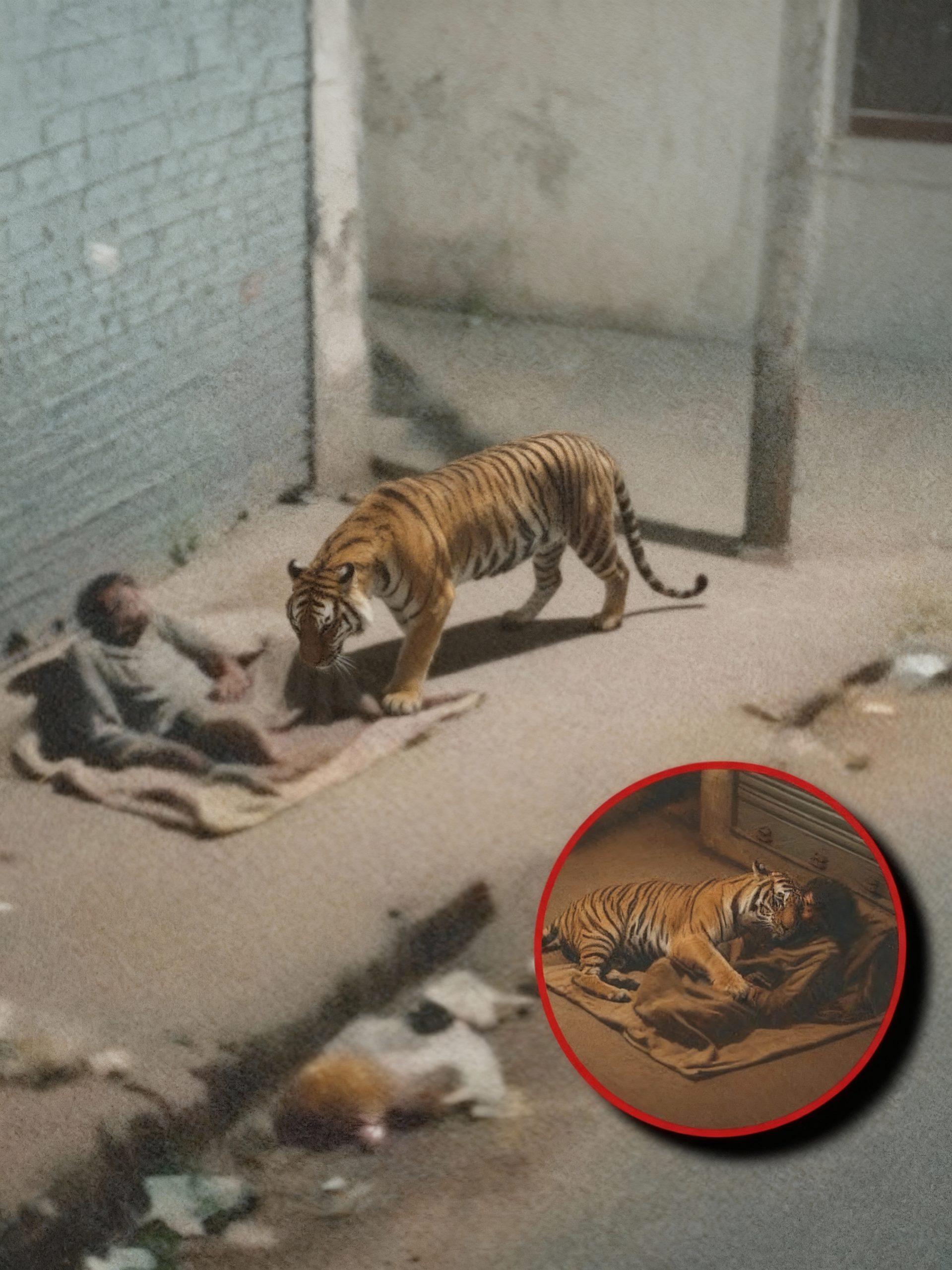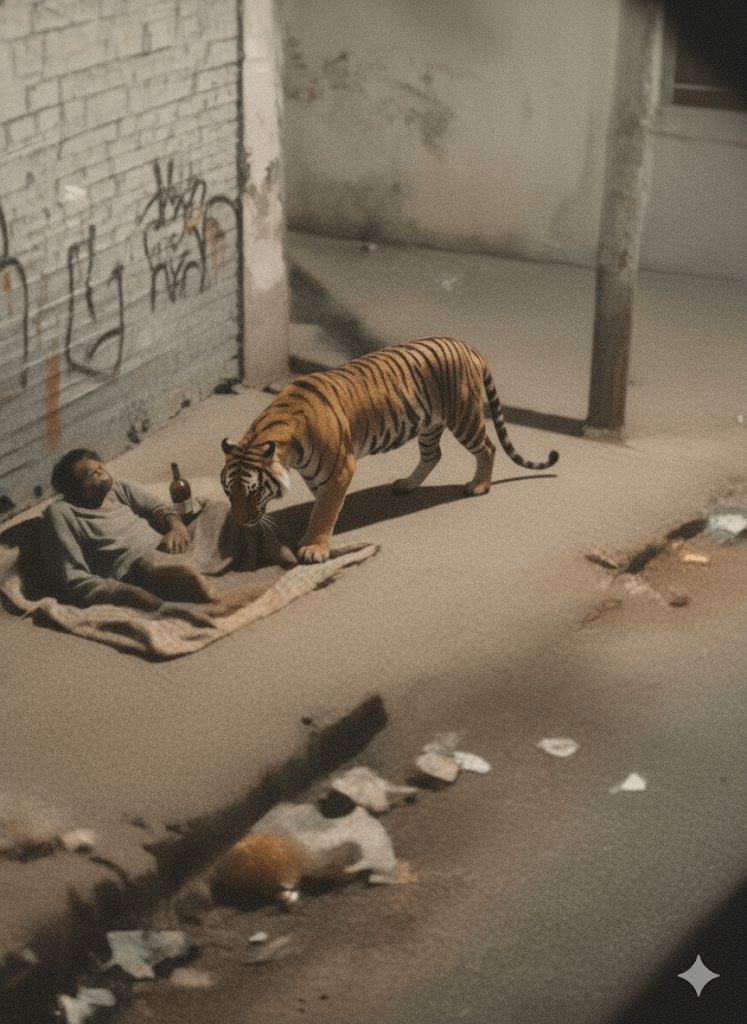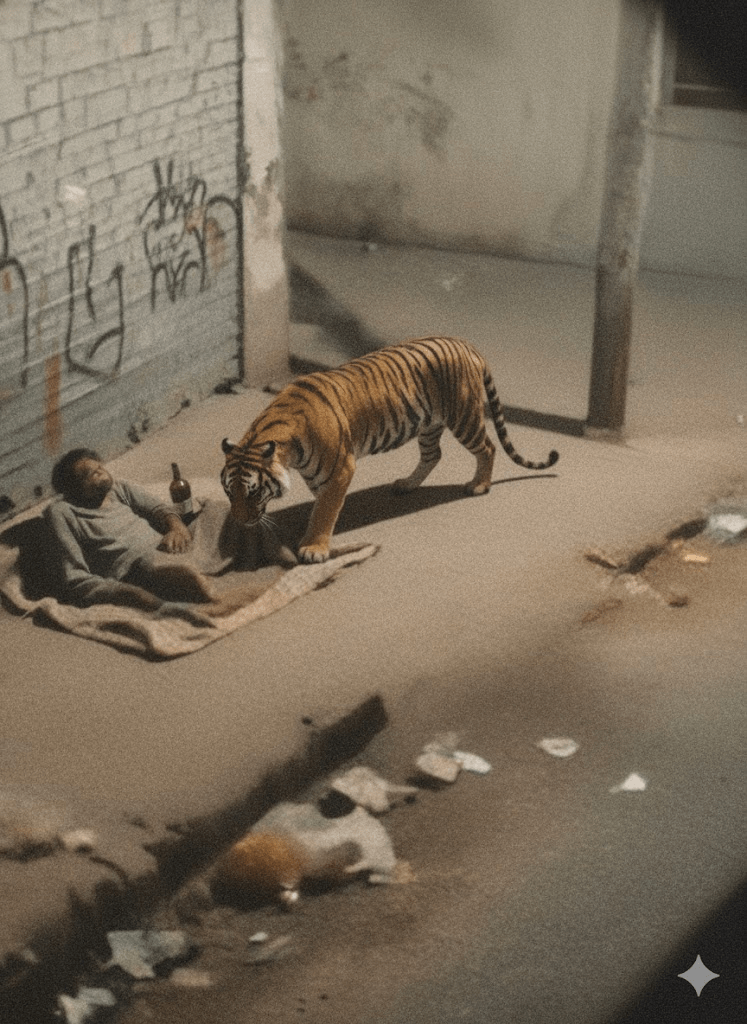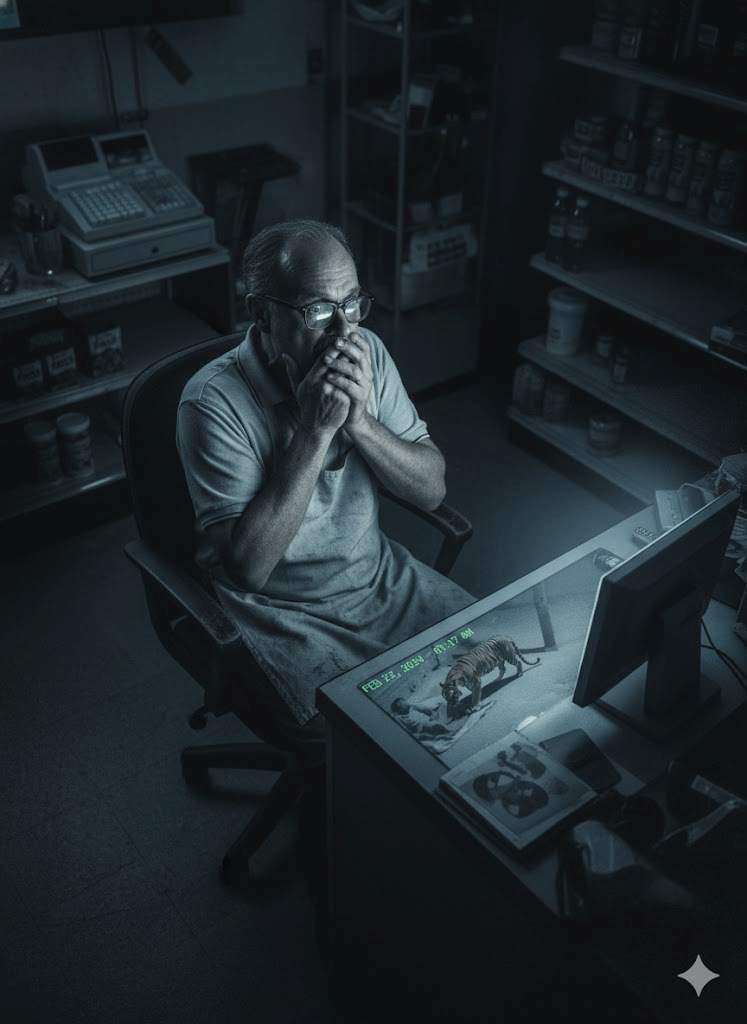In the quiet, often overlooked alleys of a bustling metropolis, where the city’s ceaseless rhythm softens to a whisper, a tale unfolded that defies belief and challenges our perceptions of the wild. It began as a series of unsettling reports: a large tiger, a creature of raw power and untamed majesty, had been sighted roaming the urban sprawl, leaving a trail of fear and unanswered questions in its wake. Authorities scrambled, traps were set, and a collective sense of unease settled over the population, transforming familiar streets into zones of nervous caution. Yet, amidst this heightened alert, an extraordinary and deeply ironic encounter took place, far from the prying eyes of surveillance teams, involving a man on the margins of society and the very beast that had become the city’s most feared enigma. It was a night when the lines between predator and companion blurred, all under the dim, indifferent glow of a flickering streetlamp.

Our unwitting protagonist, a homeless man named Arthur, had sought refuge in a secluded alcove, his usual solace found in the bottom of a bottle. As the chill of the late night seeped into his bones, a new warmth began to radiate beside him, accompanied by a soft, rumbling growl. In his inebriated state, Arthur registered only a large, comforting presence, a “big fuzzy” stray dog seeking warmth just like himself. With an instinct born of loneliness, he reached out, embracing the creature, finding an unexpected comfort in its solid form and thick fur, before drifting back into a deep, alcohol-induced slumber. The irony was profound: the city’s terror, now a source of unexpected solace.

By dawn, the mysterious companion had vanished as silently as it appeared, leaving Arthur to awaken to the usual harsh reality of his surroundings, unaware of the extraordinary embrace he had shared. The next morning, however, unfolded a chilling revelation for Mr. Henderson, the owner of the convenience store whose security camera overlooked the alley. Reviewing the previous night’s footage, he initially scoffed at the blurry, striped form approaching the sleeping man, assuming it was a trick of light or a large raccoon. But as the image sharpened, and the unmistakable silhouette of a majestic Bengal tiger filled the screen, Henderson’s casual viewing turned to horror.

The footage sent shivers down his spine. It showed the tiger approaching Arthur, sniffing gently, and then, to Henderson’s utter disbelief, settling down beside him. The most astonishing part? Arthur, in his stupor, reaching out and drawing the massive predator closer, mistaking its soft growls for the purrs of a friendly canine. The tiger, rather than reacting with predatory instinct, simply remained, its golden eyes reflecting the dim streetlights, a silent guardian in the urban wilderness. This was no ordinary animal; it was an anomaly, a creature behaving in a way that defied every known wild instinct.







